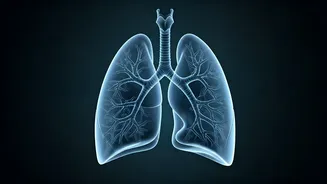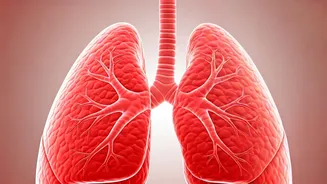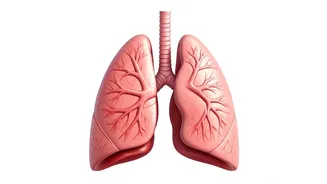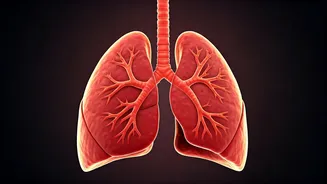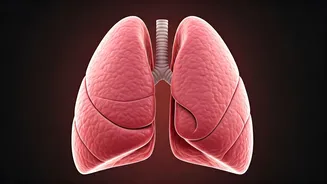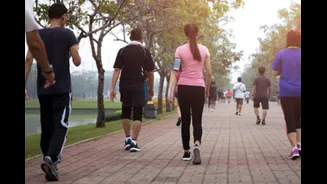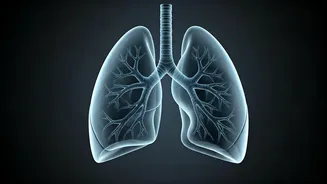Diwali's Respiratory Challenge
The festival of Diwali, with its vibrant fireworks and increased air pollution, can pose significant challenges for respiratory health. The combination
of smoke, dust, and other pollutants often leads to a noticeable decline in air quality, impacting our ability to breathe freely. This is especially true for those with pre-existing respiratory conditions. Given these circumstances, taking proactive measures to safeguard your lung health becomes crucially important during this time. This is where mindful practices like yoga, particularly those designed to improve lung capacity, offer a practical and effective solution, helping you navigate the season with enhanced well-being.
Chest-Opening Yoga Explained
Chest-opening yoga poses are specifically designed to expand the chest cavity, promoting deeper breathing and increased airflow. These poses gently stretch the muscles in the chest, shoulders, and upper back, creating more space for the lungs to fully expand. This increased space allows for a greater intake of oxygen with each breath, contributing to improved lung capacity. Practicing chest-opening poses regularly helps to counteract the effects of a sedentary lifestyle and poor posture, both of which can restrict breathing. Incorporating these poses into your routine is a simple yet powerful way to improve overall respiratory health. Examples of these poses include the Bridge Pose (Setu Bandhasana), the Cobra Pose (Bhujangasana), and the Fish Pose (Matsyasana).
A 10-Minute Routine Revealed
Creating a quick yet effective 10-minute yoga routine centered around chest-opening poses is an excellent approach to improving lung health. Begin with a few minutes of gentle warm-up exercises to prepare your body. Incorporate poses like the Cobra Pose, holding each for about 30 seconds. Transition to the Bridge Pose, maintaining the position for approximately the same duration. The Fish Pose is also valuable, stretching the chest area. Finally, conclude with a few minutes of deep breathing exercises, focusing on slow, controlled inhalations and exhalations. This simple routine, when practiced daily, can make a noticeable difference in your breathing and lung capacity. Remember to listen to your body and modify poses as needed to avoid any strain or discomfort.
Pranayama: Yogic Breathing Power
Pranayama, or yogic breathing exercises, are an integral part of improving lung health and enhancing the benefits of chest-opening yoga poses. Pranayama involves controlling your breath, which in turn influences the flow of prana (life force) within your body. Techniques like deep belly breathing (Diaphragmatic breathing) and alternate nostril breathing (Nadi Shodhana) are highly effective in improving lung function and reducing stress. Practicing Pranayama regularly helps to increase the amount of oxygen your body receives, promoting better circulation and overall health. The practice also calms the nervous system, reducing anxiety and promoting a sense of well-being. By integrating Pranayama into your daily routine, you can further maximize the benefits of chest-opening poses, leading to stronger, healthier lungs.
Daily Practice Benefits
Consistency is key when it comes to reaping the benefits of yoga and Pranayama. Making this 10-minute routine a daily practice can bring significant improvements to your respiratory health. Over time, you’ll likely notice a deeper, more relaxed breathing pattern, increased lung capacity, and reduced feelings of breathlessness. Regular practice also helps to boost your immune system and overall energy levels. It can assist in counteracting the adverse effects of air pollution. Start with just 10 minutes a day, and you may wish to gradually increase the duration or intensity. The cumulative effects of consistent practice will undoubtedly enhance your respiratory health and enhance your ability to enjoy a better quality of life. Be patient with yourself, and enjoy the process.
